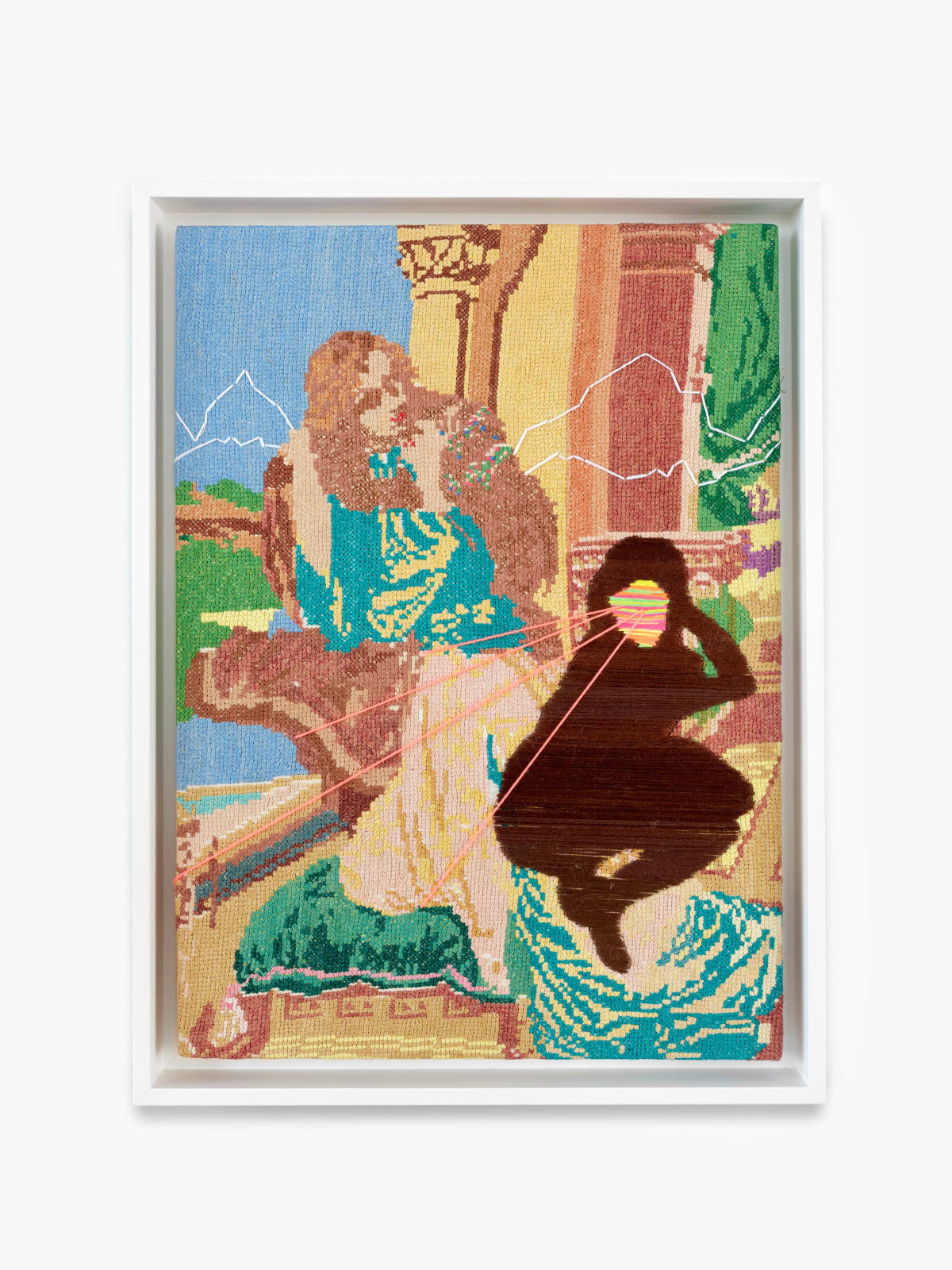Suchitra Mattai Guyana, b. 1973
50.8 x 40.6 cm
Further images
European needlepoint. The mystical, embroidered creature stands in for the “other,” the excluded, the different, the
people who for whatever reason sense that they do not fit in. The girl beast’s laser sight is her special power—the acute
perspective of someone observing from the margins. The Romantic Era imagery in the needlepoint harkens back to the
mid-19th century, the time when European colonial powers were forced to end their brutal system of enslavement.
They replaced their enslaved African workforce in places like Guyana, where Suchitra Mattai was born, with indentured
servants from India . The indentured servants were promised opportunity, but their working conditions and the ultimate
payoffs were far more inhospitable than they were promised, and their presence as low-paid workers made conditions
even more intolerable for the recently freed African Caribbeans who were hoping to create businesses and lives.
Mattai’s embroidered girl beast announces a hopeful moment of mythical transformation as the treacherous colonial
facade is subverted by the resurgent power of one of its casualties.

